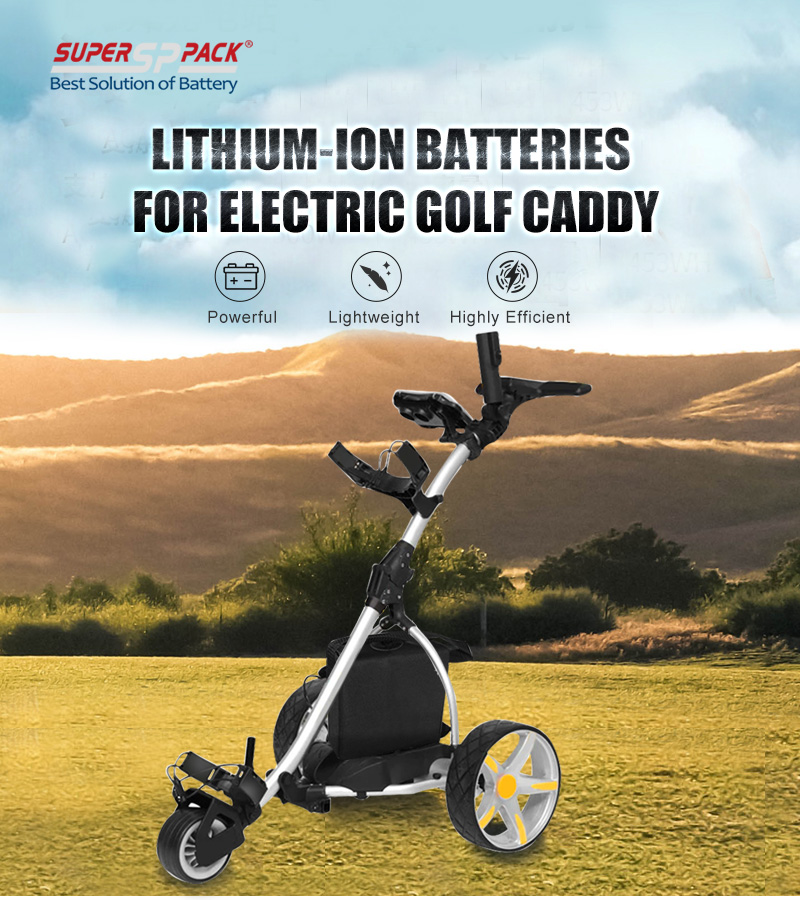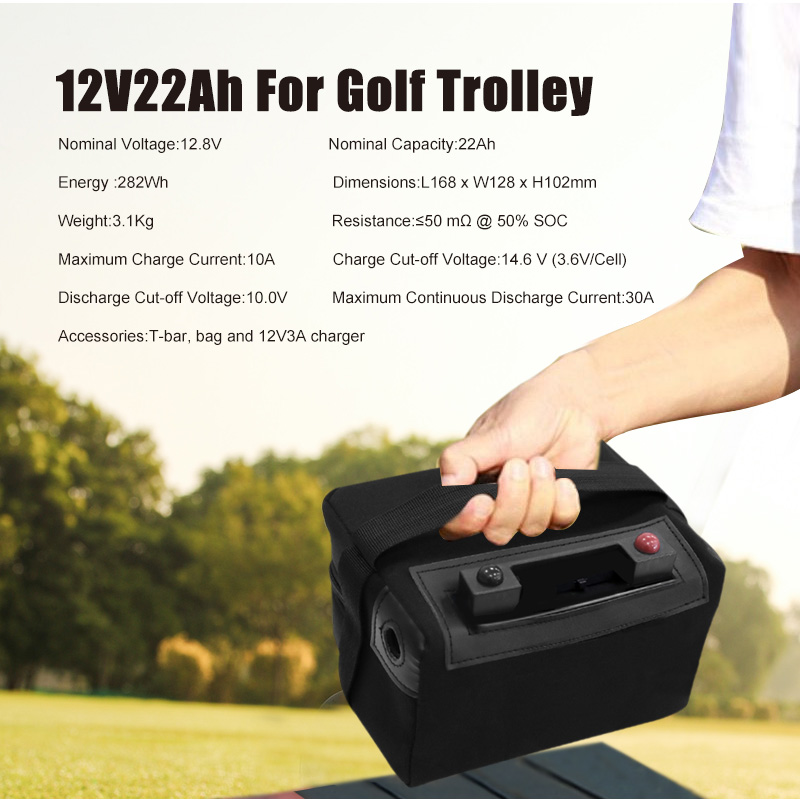Why Superpack batteries are the best choice for Electric golf trolleys
Nov 05 , 2021

Electric golf trolleys if properly cared for can last years and years. If Electric Golf Trolley won’t start, in most cases there won’t be anything wrong with the trolley in general, it’ll usually mean it’s time to replace the battery.
If you need to replace your lithium battery or are looking to convert your lead acid electric golf trolley into a lithium trolley, we’ve done the research to give you the top lithium golf batteries in the market.
Superpack's 12V22Ah lithium battery is the Best Lithium Batteries for electric golf push trolley
Superpack's 12V22Ah LiFePO4 lithium-ion golf battery with T-bar connector, bag & charger, the premium option for the frequent/professional golfer
Fits all makes & models such as Powakaddy, Motocaddy & Hillbilly. T-bar connector can be removed for universal fitment.

Superpack's 12V22Ah Golf Push Trolley lithium batteries Advantages
• Lighter – Probably the main advantage of lithium golf batteries is that they are lighter than lead acid batteries. This not only helps you get your electric golf trolley to and from the course easier, but it also makes for smoother handling on the course. A lighter batter will also use up less juice meaning your charge should last longer and help you get more holes out of your trolley.
• Smaller – Not only are lithium batteries lighter but they are also smaller. This means golf trolleys designed for lithium batteries can generally fold down smaller and the battery compartment isn’t as large and doesn’t take up as much space.
• Shorter charging times – The charging time can be significantly less for lithium batteries, with a full charge taking about three to five hours per charge. For comparison a lead acid battery typically takes around eight hours to fully charge.
• Better for the environment – As well as taking less time and energy to charge, lithium batteries will generally last longer in terms of the battery life cycle. With a lithium battery you can expect to get 2,000 – 5,000 charging cycles vs. 500 – 1,000 from a lead acid battery meaning they can be considered better for the environment. Not only that, but they also contain non-hazardous materials whereas most lead acid batteries do contain hazardous materials that are harmful to the environment. Whilst both batteries require special measures to dispose of, there’s less chance of causing any environmental damage with a lithium battery.
